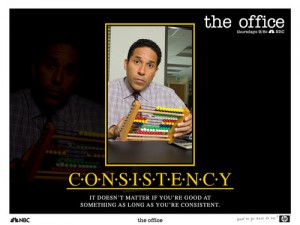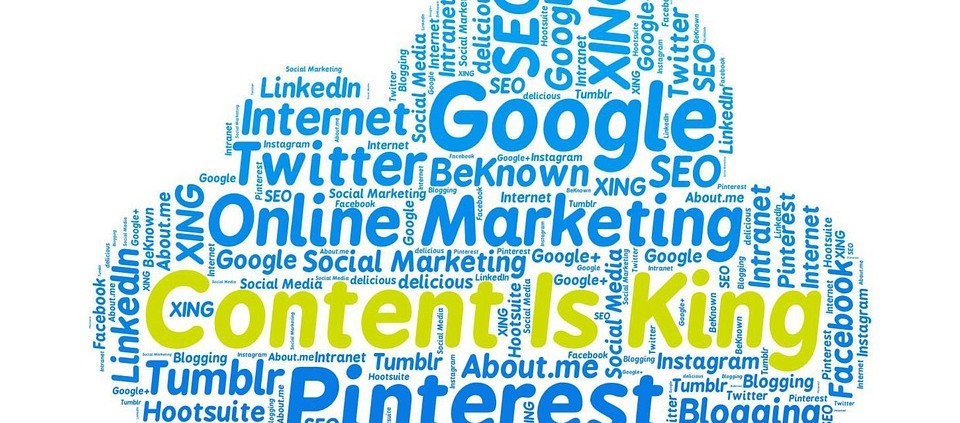Crush It with Digital Content Marketing
Now that you’ve gone through and optimized your website for search engines, it’s time to dive into the meat (or tofu for the more omnivorous out there) of your SEO campaign. Remember when we analyzed your competitors’ back links? We talked about how back links are generally a pretty good measure of how well sites in the niche will rank. That means if you want to rank better than your competitors, you need to get more back links than them. How do you do that? 3 words: Digital Content Marketing.
In order to get more back links, you need to think from the perspective of a website owner. Why would they link to another site? The answer is almost always the same: valuable content. Maybe it’s an interesting article, a funny video, or a great interview, but whatever it is always adds value to the visitor’s experience.
Content Marketing Defined
Fact: Digital content marketing, when done right, is a natural machine for SEO. More importantly, it’s the most effective way to convert visitors into purchasing customers and clients.
Digital Content marketing is about creating relavant and interesting content for your visitors so that they will pay attention to you and your brand. That means when it comes time for them to make a buying decision, who is going to be on their minds? Your Brand. Who is the authority in the space they are going to trust? Your Brand. So, who do you think they’re going to buy from?
Companies and Organizations that engage in content marketing understand one key thing:
Your customers don’t actually care about your business, they care about themsleves, their wants, and their needs.
 Traditional marketing like radio, TV, and billboards is increasingly ineffective. In an age where attention spans are shorter than ever, traditional, in-your-face, interruption marketing just won’t work. Businesses and Organization that engage in digital content marketing understand this.
Traditional marketing like radio, TV, and billboards is increasingly ineffective. In an age where attention spans are shorter than ever, traditional, in-your-face, interruption marketing just won’t work. Businesses and Organization that engage in digital content marketing understand this.
Research from 2010 indicates up to 43% of internet users are now ad blind. The scarcest resource is attention. Modern consumers have access to more information and resources than was imaginable even 20 years ago. As marketers, we have to acknowledge this and adjust accordingly.
How to get someone’s attention
In a world with so many things to distract consumers, how do we get and hold their attention? The answer is deceivingly simple – give them what they want. Instead of trying to force a sale, connect with your prospects. You as a marketer or business owner have to understand their wants, their needs and show them how your product or service helps them fulfill that need. How do you do that? Digital Content marketing.
A Very Brief History of Content Marketing
Let me prove to you that digital content marketing isn’t some fad, but a provent technique adapted to modern mediums. Content Marketing has been around for over a hundred years, and it’s been successful since it’s inception.
 Early adopters included Jell-O, whose 1904 recipe book contributed to over $24 million in sales in 2010 dollars in less than two years. That’s a LOT of Jell-O. With the advent of the radio, P&G began sponsoring radio soap opera for brands like Duz and Oxydol (hence the “Soap” Opera). As technology evolved, content marketing became more affordable and more and more businesses adopted it. (Check out Content Marketing World’s Timeline video to see the full history).
Early adopters included Jell-O, whose 1904 recipe book contributed to over $24 million in sales in 2010 dollars in less than two years. That’s a LOT of Jell-O. With the advent of the radio, P&G began sponsoring radio soap opera for brands like Duz and Oxydol (hence the “Soap” Opera). As technology evolved, content marketing became more affordable and more and more businesses adopted it. (Check out Content Marketing World’s Timeline video to see the full history).
Digital content marketing is only the newest expression of a technique that’s been making businesses money for the last century. Still, one important question remains:
Does Digital Content Marketing Work? Why?
The reality is that digital content marketing works better than it ever has before. As technology prices go down, and attention becomes scarcer, it is easier and easier for businesses delivering quality content to compete online.

In fact, digital content marketing, also called inbound marketing, has been shown to reduce the cost per lead by 60%-80%.That return only improves over time. Digital content marketing isn’t like putting up a billboard or running a commercial. It’s a long term strategy that can help a business keep it’s sales funnel loaded with high-quality low cost leads.
A case study by Scripted, an online writing marketplace, revealed that in just one month, they were able to dramatically increase traffic, lower bounce rates and increase time on site. That means more people spending more time on your site and interacting with your brand. Now slap a “buy it now” button on there and we’re in business (literally).
How to get started with digital content marketing
If you’re still reading, I’m assuming I’ve got you sold on digital content marketing, or at least intrigued (I’ll take it!). But I haven’t answered a fundamental question, how do you “do” digital content marketing. The truth is this field is still growing so there is a lot more debate than consensus on the best tactics for content marketing online. In the end however, it comes down to a few essential steps: Know your audience, create content that engages them, get that cotent out into the world, review, test, optimize and repeat.
1. Research and Persona Creation – Know your Audience
Before you start any digital content marketing campaign, you need to know who it is you’ll be writing for, that means knowing your audience. Writing, especially the kind of copywriting used in a digital content marketing strategy is best when it’s written as though you were speaking directly to the reader. That means you need to know who your customer is at a fundamental level.

The power of modern technology makes this much easier than it’s ever been in the past. Use social media sites like Twitter, Facebook, LinkedIn, Pinterest and niche specific forums to get an idea of what your ideal customer is like. One useful tool for this is Followerwonk, a twitter bio search engine.
Start with basic demographic information like sex, age, location and education level and then move into more detailed information like interests.
Next move on to identifying where they spend their time on the internet. What sites are they looking at? What are their interests? At this point, I like to try and think of someone I personally know that fits these criteria. The more specific and personal you’re able to get in this stage, the more effective you’ll be when you start creating content. With a recent campaign, I had a friend that exactly matched the client’s ideal customer and I called him up a few times in this stage to get his opinion and help.
Because no digital content marketing campaign is complete without exposure, you’ll also need to create a persona for who you want to be promoting your content. Go through the same process as you did when you created a persona for your ideal customer, but this time for your ideal influencer. Who are the most influential bloggers, journalists or webmasters in your niche? What sites do they manage and contribute to? Do they have twitter or facebook pages? Start thinking about what kind of content you could provide for them and what their readers are interested in. We’ll revisit this in our next email on getting exposure.
2. Content and Content Production Process Creation (or Get Blogging!)
Now that you know who you’re making content for, it’s time to start pumping that content out. If you’re just getting started with digital content marketing, I think blogging is the way to go. With the rising popularity of WordPress, it’s never been easier to set up a SEO friendly blog to get started with digital content marketing. Blogs are also a good choice because they require relatively little up front investment, and if you stick at it can generate great long term returns. If you blog twice a week, every week, for a year, you’ll have over 100 blog posts out there helping bring visitors to your site.
Blogs can be effective with minimal SEO or technical knowledge because they leverage the power of the long tail, a search term that isn’t all that popular, but very specific to your business. That means if you run a cupcake shop, you probably won’t be able to generate a lot of traffic from the search query “cupcakes”. It’s just too competitive. BUT, you probably will be able to rank well and get some traffic from “chocolate smiley face cupcakes.” More specific keywords are usually better converting as well, someone searching “chocolate smiley face cupcakes knows exactly what they’re looking for and is closer to buying than someone just searching “cupacakes.” Go back to that persona research you did and think about what your ideal customer would be searching and write about it. Using the Adwords Keyword Tool that we talked about in the first lesson on Research is another great way to get insight into what your customers are interested in. Or even better, ask them what they’re searching for, either in-person or on social media site. Now write about it.
It’s important to remember that initially the point of your initial content is not to sell your product or service. The purpose of your content is to get people to your site and engage with them. A successful digital content marketing campaign is all about creating long-term processes that keep your sales funnel full, even as the funnel gets bigger and bigger (you know, because of all those new leads!). The first step to that is getting more people to your site. That’s what this email series has been about up until now. However, it’s not the final step.
Once they’re there, it’s time to convert them into buyers. That means transitioning from content that’s targeted more towards engagement to content that’s meant to sell.

While I think a blog is a great way to get started with digital content marketing, it’s certainly not the only way to get started. There are more ways than ever to get your content out into the world. Video (Vlogging anyone?) and Audio (Podcasts) are both extremely compelling mediums and are underused by businesses. Producing quality video and audio can be more expensive than writing though, but for businesses that really need to build trust with their customers like medical and law practices, the returns on video and audio can make them well worth the investment. Whatever method you choose, make sure to inject your organization’s personality into it. People get enough dull corporate speak already so don’t be afraid to really engage them.
Whatever route you choose, the important the to remember is consistency. Don’t go blog for one month then come back and tell me it didn’t work. If you’re going to commit to digital content marketing (and I think you should), you need to be consistent. That means at least a 6 month commitment and I think a year is much more realistic. You’re better off starting small, being consistent, and building up than going all out from the get-go. Putting a sizable investment in upfront can speed up your returns, but the value is in the long-term so don’t over commit on the frontend only to run out of budget.
Action Steps:
- Create a customer persona
- Create a influencer persona
- Start producing content






